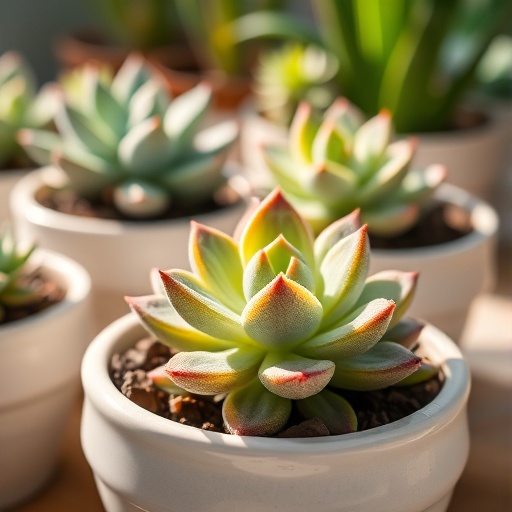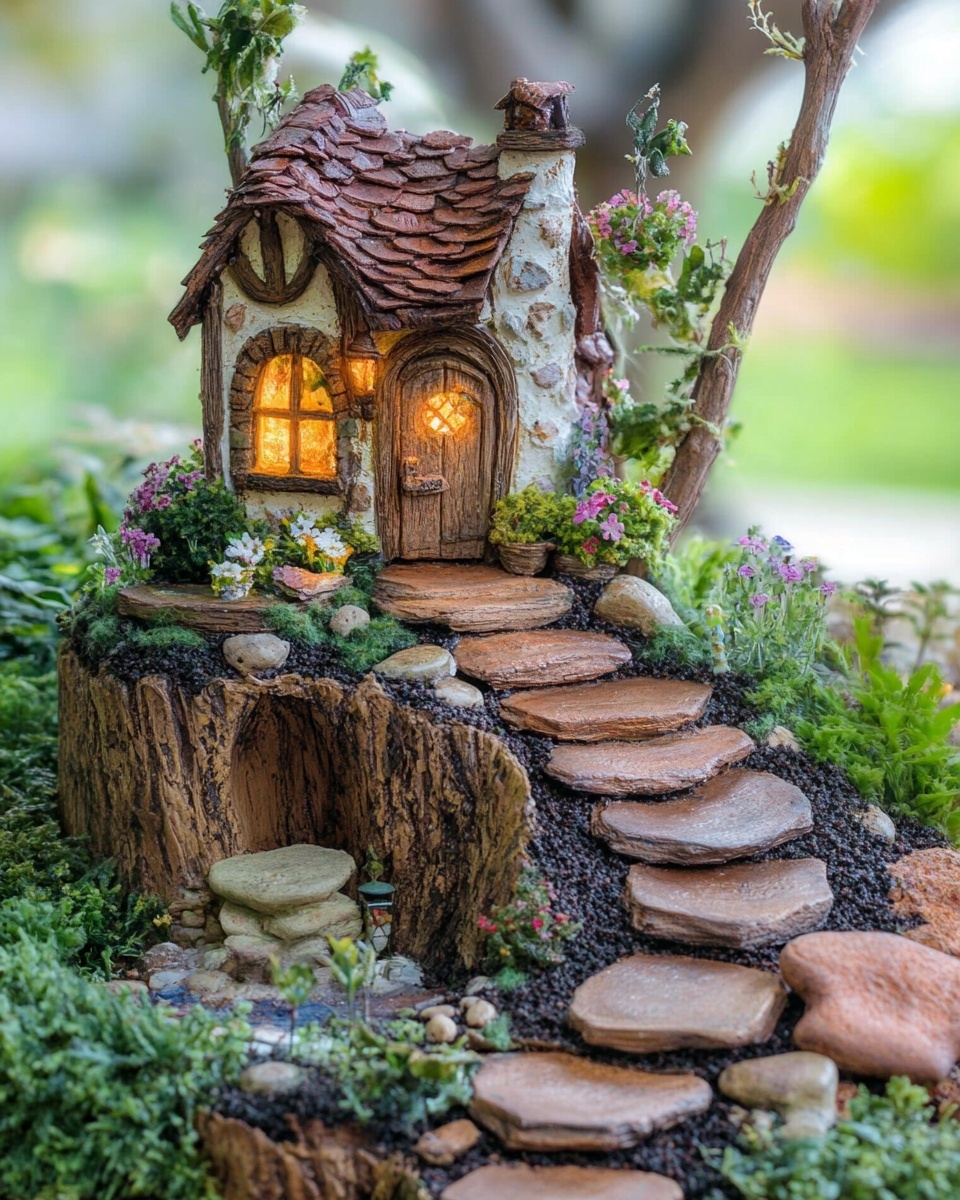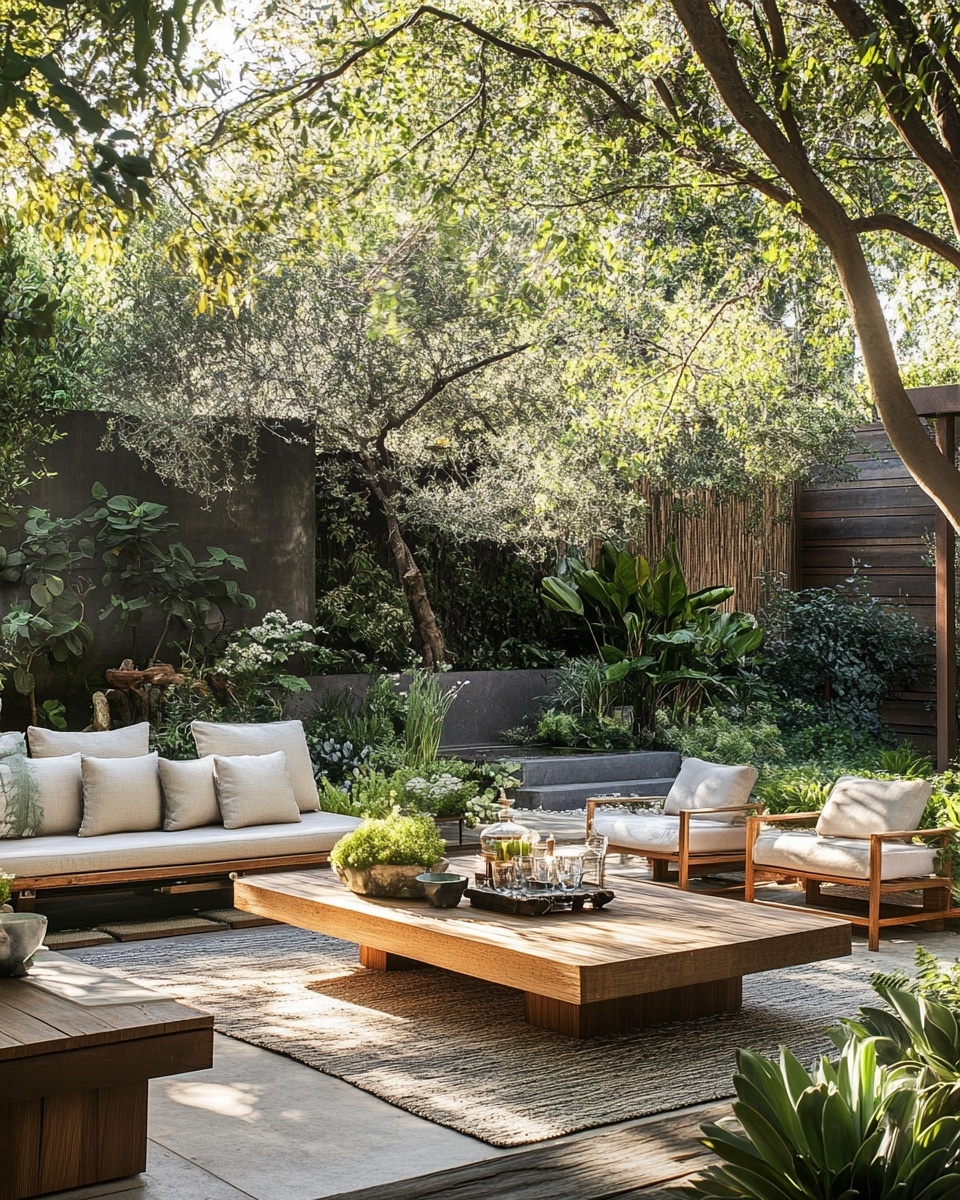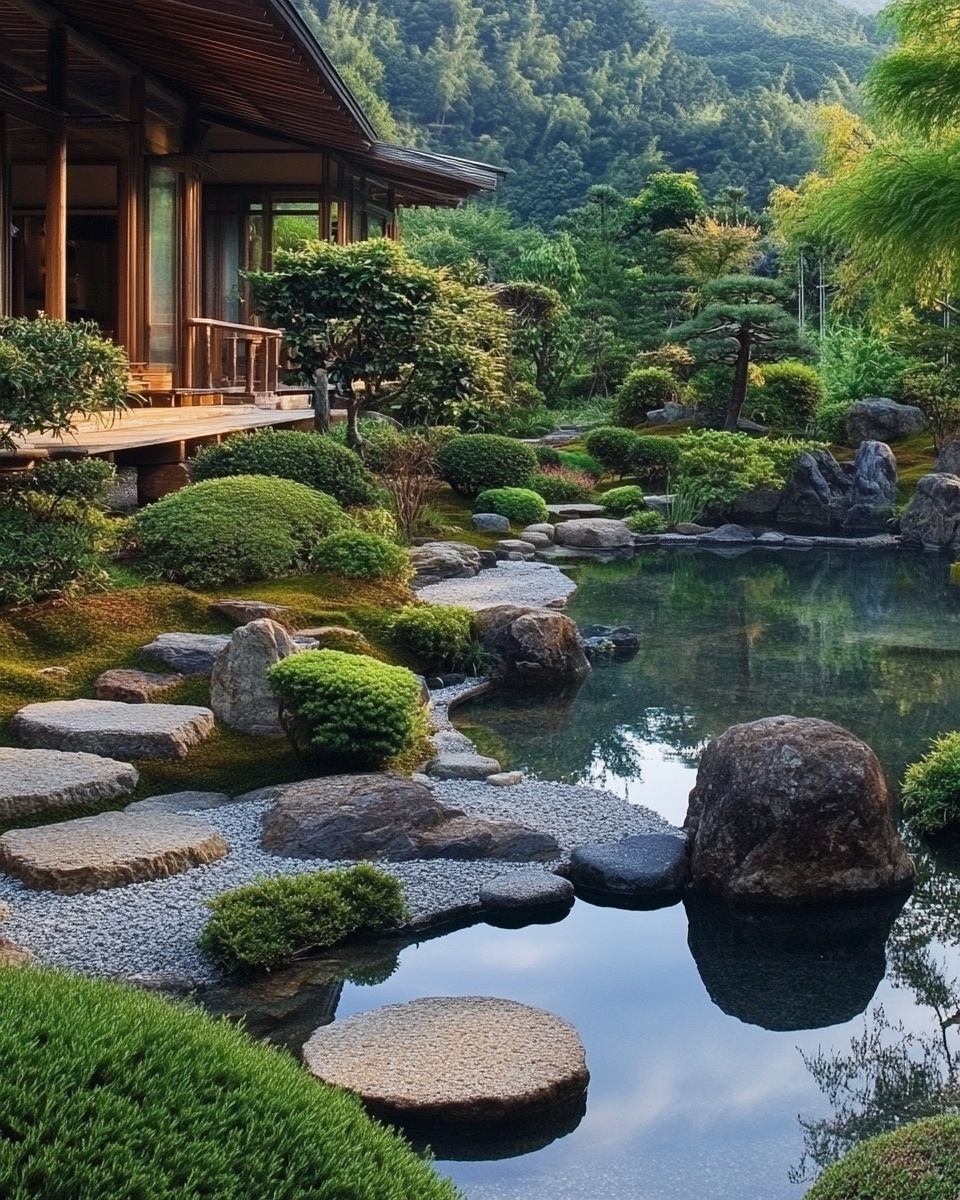Did you know that over 60% of plant enthusiasts struggle with keeping their indoor succulents alive, often due to a single, common mistake? It’s not a lack of sunlight or poor soil, but rather the silent killer: overwatering. Many assume that houseplants need frequent watering, but indoor succulents thrive on neglect, making them perfect companions for busy individuals or those new to gardening. These resilient beauties store water in their fleshy leaves and stems, requiring far less hydration than most plants. This guide will reveal the secrets to cultivating thriving indoor succulents, ensuring they get just the right amount of care without the dreaded soggy roots. We’ll delve into data-backed strategies and expert tips to transform your succulent-growing journey from struggle to success, helping you confidently nurture these charming plants.
Tools & Materials Needed
Cultivating happy indoor succulents doesn't require an extensive arsenal, but having the right tools and materials is crucial for their well-being. Think of it as setting up a tiny, efficient ecosystem tailored to their unique needs.
- Pots with Drainage Holes: This is non-negotiable. Terracotta or unglazed ceramic pots are ideal as they allow for better airflow and wick away excess moisture, preventing root rot. If using plastic, ensure ample drainage.
- Well-Draining Potting Mix: Regular potting soil is a death sentence for succulents. Opt for a specialized succulent/cactus mix, or create your own by blending equal parts potting soil, perlite (or pumice), and coarse sand. This mimics their natural arid environments. For an eco-friendly touch, consider using recycled coconut coir in your DIY mix.
- Small Shovel/Trowel: For easy transplanting and handling of soil.
- Gardening Gloves: Protect your hands from prickly varieties or chemical contact.
- Watering Can with a Fine Spout: Allows for precise watering directly to the soil, avoiding the leaves.
- Moisture Meter (Optional but Recommended): A simple tool that provides an accurate reading of soil moisture levels, taking the guesswork out of watering. It’s a small investment that can save you from overwatering errors.
- Bottom Tray/Saucer: To catch any runoff water from the drainage holes.
- Pebbles or Decorative Stones (Optional): For a top dressing to enhance aesthetics and help retain some moisture in very dry environments (though use sparingly as some argue against it for airflow).
Time & Effort Overview
Growing indoor succulents is remarkably low-maintenance, a stark contrast to many other houseplants. Once established, they demand minimal attention, making them perfect for those with limited time or a tendency to forget to water.
Initial Setup/Planting: Approximately 15-30 minutes per plant. This includes choosing the right pot, preparing the soil, and carefully transplanting.
Regular Maintenance (Watering & Inspection): Roughly 5-10 minutes every 2-4 weeks, depending on your climate and the succulent species. This is significantly less than, say, a peace lily, which might need watering weekly.
Repotting: Annually or every two years, taking about 10-20 minutes.
Difficulty Level: Beginner. Indoor succulents are highly forgiving, especially if you follow the core rule of underwatering rather than overwatering. They are significantly easier to care for than many flowering plants or delicate tropical varieties.
Step-by-Step Gardening Process
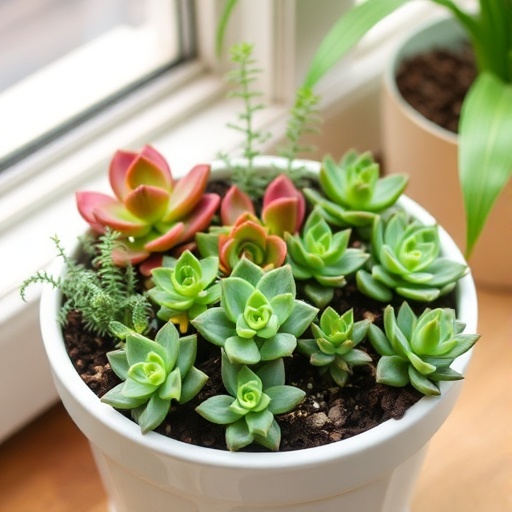
Cultivating beautiful indoor succulents is a rewarding experience. Follow these straightforward steps to ensure they thrive.
Choose Your Succulents Wisely
Select healthy plants with firm, vibrant leaves and no signs of wilting or discoloration. Consider varieties known for their indoor resilience, such as Echeveria, Haworthia, Gasteria, or Snake Plant (Sansevieria). Research their light requirements to match them with suitable spots in your home.
Prepare the Pot and Soil
Ensure your chosen pot has ample drainage holes. Place a small piece of mesh or a coffee filter over the drainage hole to prevent soil from escaping while still allowing water to drain freely. Fill the pot about two-thirds full with your specialized succulent potting mix.
Gently Transplant Your Succulent
Carefully remove the succulent from its nursery pot. Loosen any tightly bound roots, being gentle to avoid damage. Place the succulent in the new pot, ensuring its base is level with the soil line you've established. Fill the rest of the pot with soil, leaving about an inch of space from the rim. Don’t worry if a few leaves fall off during this process; they can often be propagated!
Avoid Immediate Watering
After transplanting, resist the urge to water immediately. Give the plant a few days (3-5 days) to acclimate to its new home and for any damaged roots to heal. This prevents root rot in susceptible spots.
Position for Optimal Light
Place your newly potted indoor succulents in a location where they will receive plenty of bright, indirect sunlight. A south-facing window is often ideal, but east or west-facing windows can also work. If natural light is insufficient, consider supplementing with a grow light for 12-14 hours a day. Rotate your plants every few weeks to ensure even growth.
Establish a Smart Watering Routine
This is the most critical step for indoor succulents. Wait until the soil is completely dry before watering. You can check by inserting a finger about an inch or two into the soil. If it feels dry, it's time to water. When you do water, do so thoroughly until water drains from the bottom of the pot. Immediately empty any excess water from the saucer to prevent the roots from sitting in stagnant water. In winter, reduce watering significantly, often to once a month or even less, as growth slows.
Growth & Care Tips
Once your indoor succulents are settled, a consistent care routine will ensure their long-term health and vibrant appearance. Forget the myth that succulents need no care; they simply need the right kind of care, often less than you’d think.
- Watering Frequency: The "Soak and Dry" Method Succulents thrive on a "soak and dry" cycle. As mentioned, wait until the soil is bone dry. This might be every 2-4 weeks, but it depends heavily on factors like ambient temperature, humidity, pot size, and the succulent variety. A common mistake is watering on a schedule. Instead, water when the plant shows signs of thirst (slightly wrinkled leaves) or when the soil moisture meter reads dry. Data shows that accidental overwatering is responsible for 70% of indoor succulent failures.
- Sunlight Exposure: Bright is Best Indoor succulents generally need at least 6 hours of bright, indirect sunlight daily. Direct, intense afternoon sun through a window can sometimes scorch their leaves, so monitor them. If your succulent starts stretching or becoming "leggy" (etiolation), it's a sign it needs more light. Consider a grow light during darker winter months or if your home lacks sufficient natural light.
- Pruning for Health and Shape: Pruning isn't often necessary for small indoor succulents, but you can remove dead or dying leaves at the base to prevent rot and improve air circulation. Use clean, sharp shears. For leggy succulents, you can behead them: cut the top off, let the cut end callus for a few days, and then plant it in fresh soil to restart. The original base will often sprout new offsets.
- Fertilization: Less is More: Succulents are not heavy feeders. Fertilize sparingly, if at all. During their active growing season (spring and summer), you can use a balanced, diluted succulent or cactus fertilizer (at half-strength) every 2-4 months. Avoid fertilizing in fall and winter when they are dormant.
- Pest Prevention: Vigilance is Key: Indoor succulents are relatively pest-resistant, but mealybugs and spider mites can occasionally be an issue. Inspect your plants regularly. If you spot pests, isolate the plant and treat it with a cotton swab dipped in rubbing alcohol for mealybugs, or neem oil spray for more widespread infestations. Ensure good air circulation to deter pests.
Eco-Friendly & Sustainable Alternatives
Gardening, even indoors, can be a wonderfully eco-conscious activity. By making a few mindful choices, you can reduce your environmental footprint while nurturing your indoor succulents.
- DIY Potting Mix: Instead of buying pre-packaged mixes, create your own using compost from your kitchen scraps, perlite (if sourced sustainably), and coarse sand. This reduces plastic waste and gives you control over the ingredients.
- Repurpose Containers: Get creative with your pots! Old tin cans (with drainage holes added), ceramic mugs that have lost their handles, or even interesting glass jars can be upcycled into unique planters for your succulents (just make sure they have drainage). This is a fantastic way to give new life to items that would otherwise end up in landfills.
- Compost Tea as Fertilizer: Instead of chemical fertilizers, use diluted compost tea. This organic solution enriches the soil with beneficial microbes and nutrients, promoting healthy growth without harmful runoff. You can easily make your own using a small composting bin.
- Water Conservation: While succulents don't demand much water, you can still conserve it. Collect rainwater for your plants, or use "gray water" from rinsing vegetables (ensure it's free of detergents or chemicals).
- Small Space Solutions: For those with limited space, vertical gardens or plant shelves are excellent ways to display multiple indoor succulents. Consider creating a "succulent wall" using repurposed pallet wood or a tiered plant stand. This maximizes your green space and can be incredibly appealing. If you're keen on maximizing small spaces, you might find valuable insights in our article on small apartment indoor gardening hacks.
Creative Ideas & Uses
Indoor succulents are more than just plants; they're versatile decor elements that can transform any space. Their diverse shapes, sizes, and colors make them perfect for a myriad of creative displays.
- Miniature Landscapes (Terrariums & Dish Gardens): Create stunning, low-maintenance living art pieces by arranging different indoor succulents in open terrariums or shallow dish gardens. Combine them with decorative pebbles, sand, and small figurines to tell a story or evoke a serene desert scene.
- Living Wall Art: Mount small, lightweight planters containing various succulent species onto a vertical panel to create a breathtaking living wall. This adds a unique architectural element and a pop of green to any room.
- Table Centerpieces: A grouping of small, diverse succulents in a beautiful pot makes for an elegant and long-lasting centerpiece for dining tables, coffee tables, or desks. Unlike cut flowers, they'll thrive for months, even years.
- Bathroom Greenery: Succulents love the indirect light and occasional humidity of a bathroom (as long as it's not constantly damp). Their clean aesthetic blends perfectly with modern bathroom designs.
- Gift Ideas: Potted succulents make thoughtful and sustainable gifts. Pot them in unique containers, add a personalized tag, and you have a charming present that keeps on giving. Consider pairing them with handmade crafts for an extra personal touch, perhaps inspired by creative DIY ideas you might find on places like https://www.pinterest.com/janatjanay47/.
- Combine with Other Plants: While succulents generally prefer drier conditions, you can combine them in larger planters with other drought-tolerant indoor plants, provided their watering needs are similar. This can create a more lush, varied display.
Common Mistakes to Avoid
Even seasoned gardeners can fall prey to common missteps when it comes to indoor succulents. Knowing what to avoid is as crucial as knowing what to do.
- The Overwatering Trap: This is, without a doubt, the number one killer of succulents. As we highlighted earlier, overwatering causes root rot in over 60% of houseplants, and succulents are especially susceptible. When roots sit in soggy soil, they suffocate and decay, leading to a quick demise. Always remember the "soak and dry" method.
- Inadequate Drainage: Using pots without drainage holes or placing too many pebbles at the bottom of a pot (without actual drainage) creates a water reservoir that suffocates roots. Water must be able to escape freely.
- Insufficient Light: While succulents don't need direct scorching sun all day, they do require significant light. Too little light leads to etiolation (stretching, pale growth), weakening the plant and making it susceptible to disease.
- Incorrect Soil Mix: Using regular potting soil that retains too much moisture is detrimental. Succulent-specific soil is designed for rapid drainage.
- Ignoring Pest Issues: Small infestations can quickly become major problems. Regularly inspect your indoor succulents for tiny critters. Early detection and treatment prevent widespread damage.
- Drafts and Extreme Temperatures: While hardy, sudden temperature fluctuations or cold drafts from windows or air conditioners can stress succulents. They prefer stable, moderate room temperatures.
- Over-fertilizing: Succulents need very little, if any, fertilizer. Too much can burn their roots and damage the plant. Stick to diluted solutions and fertilize only during active growth.
Maintenance & Storage Tips
Ensuring the longevity and vitality of your indoor succulents requires a bit of ongoing attention, but it’s mostly about keen observation and prompt action.
- Regular Dusting: Dust can accumulate on succulent leaves, blocking sunlight and hindering photosynthesis. Gently wipe leaves with a soft, dry cloth or a soft brush.
- Seasonal Adjustments: Understand that your succulents’ needs will change with the seasons. In winter, with shorter days and potentially drier indoor air (due to heating), they typically need less water. Reduce watering frequency significantly, sometimes to once a month or even less if they go dormant. In warmer, brighter months (spring/summer), they'll actively grow and may require more frequent watering.
- Repotting: As indoor succulents grow, they may become root-bound or deplete the nutrients in their soil. Repot them into a slightly larger pot (1-2 inches wider) with fresh succulent mix every 1-2 years. The best time for repotting is during their active growing season in spring.
- Dealing with Yellowing/Mushy Leaves: Yellow or mushy leaves are almost always a sign of overwatering. Immediately cease watering, check the roots for rot (trim away any black, squishy parts), and allow the soil to dry out completely. If the rot is extensive, you may need to propagate healthy leaves or stem sections.
- Addressing Shriveling/Wrinkling: Shriveled or wrinkled leaves usually indicate underwatering. Don't panic! Give the plant a thorough soak, letting water drain completely. The leaves should plump up within a day or two. If they don't, check for root damage or extreme root-bound conditions.
- Propagating for New Plants: A fantastic maintenance tip is propagation! If a leaf falls off or you prune a leggy stem, don't discard it. Let the cut end callus over for a few days, then place it on well-draining succulent soil. Over time, little plantlets will emerge, giving you new indoor succulents for free.
Conclusion
Nurturing indoor succulents truly is one of the most rewarding and straightforward paths into the world of indoor gardening. By focusing on smart watering, ample light, and the right soil mix, you can easily avoid the common pitfalls and cultivate a thriving collection of these charming plants. We've debunked the myth that they are fragile and shown you how simple it is to provide them with the care they truly need – which often means less, not more. From selecting the perfect pot to understanding seasonal changes, you now have the knowledge to foster robust and beautiful indoor succulents that will bring a touch of natural elegance to your home for years to come.
Ready to transform your home with these resilient beauties? Pick up your first indoor succulent today, experiment with the "soak and dry" method, and watch them flourish! Share your success stories and photos in the comments below, or tag us on social media. Let’s grow together!
FAQ
Q1: How often should I water my indoor succulents?
A1: The golden rule for indoor succulents is "soak and dry." Only water when the soil is completely dry to the touch, usually every 2-4 weeks. Use a moisture meter or stick your finger 1-2 inches deep. Err on the side of underwatering rather than overwatering.
Q2: What kind of light do indoor succulents need?
A2: Indoor succulents require bright, indirect light for at least 6 hours a day. A south-facing window is often best, but east or west-facing can also work. If your succulent looks stretched or pale, it likely needs more light.
Q3: Can I use regular potting soil for my indoor succulents?
A3: No, regular potting soil retains too much moisture and can lead to root rot. Always use a well-draining succulent or cactus potting mix, or create your own with added perlite and coarse sand. This ensures proper drainage, which is crucial for healthy indoor succulents.
Q4: My succulent leaves are turning yellow and mushy. What's wrong?
A4: Yellow, mushy leaves are a classic sign of overwatering. Immediately stop watering, remove any affected leaves, and check the roots for rot. If severe, consider propagating healthy parts of the plant.
Q5: Why are my indoor succulent leaves shriveling?
A5: Shriveling or wrinkling leaves typically indicate that your succulent is thirsty. Give it a thorough watering until water drains from the bottom. The leaves should plump up again within a day or two, showing you the resiliency of indoor succulents.
Q6: Do indoor succulents need fertilizer?
A6: Indoors, succulents need very little fertilizer. You can use a diluted succulent or cactus fertilizer (half-strength) once every 2-4 months during their active growing season (spring and summer). Avoid fertilizing in fall and winter.
Q7: Can I grow indoor succulents in a pot without drainage holes?
A7: While tempting for aesthetics, it's highly risky. Pots without drainage holes trap excess water, almost guaranteeing root rot. If you absolutely must use one, create a substantial layer of pebbles at the bottom and be extremely careful with watering, but it's generally not recommended for thriving indoor succulents.
Here are some other posts you might find helpful for expanding your gardening knowledge:
- If you're interested in alternative indoor gardening setups, explore our guide on vertical indoor garden ideas for small spaces.
- Looking for more easy-to-care-for plants? Check out our recommendations for best houseplants for beginners.
- For those considering herbs indoors, our article on 10 easy herbs to grow indoors offers great insights.
- To discover plants that not only look good but also clean your air, read about best indoor plants that purify air naturally.
- And if you're curious about maximizing your green thumb in compact areas, don't miss our easy indoor gardening setup for beginners.
